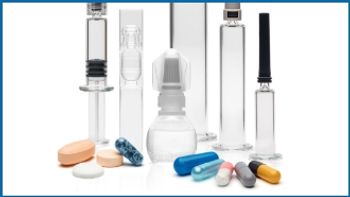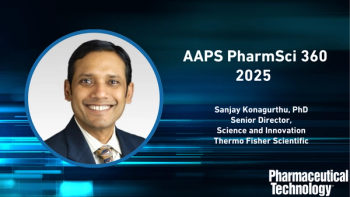
- Pharmaceutical Technology-08-01-2013
- Volume 2013 Supplement
- Issue 4
A Shifting Landscape for the Global API Market
External manufacturing plays a crucial role in pharmaceutical companies’ supply strategy. The author examines market trends for the captive and merchant global market for active pharmaceutical ingredients and intermediates.
David Crockett/Getty ImagesExternal manufacturing plays a crucial role in pharmaceutical companies’ supply strategy. The author examines market trends for the captive (i.e., in-house ) and merchant (i.e., third-party) global market for active pharmaceutical ingredients and intermediates.
The overall trends of increased globalization, generic-drug incursion, and the rising importance of emerging markets can be further seen in the demand and supply patterns of the API market. In keeping with overall pharmaceutical industry trends, recent growth in the global API market has slowed although the overall market is still increasing at a moderate pace. Led by India and China, Asia Pacific has had the highest recent growth in the API market although North America and the US remain the largest markets, respectively, on a regional and country basis. Generic APIs are outpacing growth for branded, innovator APIs. On a global supply basis, China remains the largest producer of generic APIs, largely for its domestic market as well as the largest exporter of APIs on global basis, primarily to emerging markets. Italy retains its historical position as the largest supplier of generic APIs to both Western Europe and the US although India’s position as a supplier to developed markets is on the rise.
Demand fundamentals
Overall. The global API market (including both the merchant market and the captive market) was valued at $113 billion in 2012, up from $91 billion in 2008, according to a recent report, The World API Market, by the Chemical Pharmaceutical Generic Association (CPA), an organization representing Italian API manufacturers (1). The captive API market is defined as APIs used by pharmaceutical companies for in-house production of finished dosage forms; the merchant API market is defined as APIs sold by third parties. From 2008-2012, the global API market grew at an average annual rate of 5.6% compared to an annual growth rate of 7.2% from 2004-2008. The slowing market is attributable to factors affecting the pharmaceutical industry as a whole: slowing global economic growth, increased pricing pressure due to cost-containment policies adopted by most countries, increased competition from generic drugs, higher risk of pipeline failures with elevated costs for drug discovery, and increasing competition from low-cost producing countries.
On a geographic basis, the highest growth rate for APIs between 2008 and 2012 was in Asia-Pacific (excluding Japan), which experienced average annual growth rate of 13.9%, followed by the Middle East with 8.7% average annual growth, and Eastern Europe and the Commonwealth of States (CIS) with 8.2% average annual growth, according to the CPA report (1). The developed markets in Western Europe, North America, and Japan had slower annual growth rate. Western Europe’s API market had the lowest annual average growth rate, 2.5%, followed by Japan at 3.4% and North America at 3.8%. (1).
On an absolute basis, however, North America is still the largest API market (including both captive and merchant markets) followed by Asia Pacific, although Asia Pacific is gaining ground. The North American share of the global API market declined three percentage points between 2008 and 2012 as the share of Asia Pacific increased. North America’s share was 43% in 2012, down from 46% in 2008. Asia Pacific’s share was 28.3% in 2012, up from 24.2% in 2008, according to the CPA report (1). The US remains the largest global market on a country basis, accounting for 39.7% of the global API market in 2012.
These market positions change, however, if looking at the generic API merchant market alone. Led by China, Asia Pacific accounted for 39.6% of the global generic API merchant market in 2012. China is the largest consumer on a country basis of generic APIs in the merchant market, accounting for 23.7% of the global total, surpassing the North American market as a whole (21.9%) and the US (20.4%). Between 2008-2012, China registered the fastest annual average growth rate in the generic API merchant market at 13.2%, followed by India at 11.9%. Collectively, the two countries accounted for 29.7% of the global generic API merchant market, according to the CPA report (1).
Captive versus merchant markets. During 2008-2012, the global captive API market grew at a slightly higher rate comparated to the global merchant market and is larger on an absolute basis. In 2008, the global captive API market was valued at $55 billion and rose to $69 billion in 2012, representing average annual growth of 5.8%, according to the CPA analysis. The global merchant API market was valued at $36 billion in 2008 and increased to $44 billion in 2012 (1).
Generic versus branded, innovator APIs. Within the global merchant API market, the generic API market is outpacing the branded, innovator API market. The global generic API merchant market was valued at $17 billion in 2008 and rose to $22.5 billion in 2012, representing average annual growth of 7.3%. In 2012, the global branded, innovator API merchant market was valued at $21.5 billion, slightly less than the generic market. Annual average growth in the global branded, innovator API merchant market between 2008 and 2012 was 3.1%, less than half of growth in the generic API merchant market.
The strength of the generic API merchant market is expected to continue. Overall, the generic API merchant is expected to increase at an average annual rate of 7.7% from $22.5 billion in 2012 to $30.6 billion in 2016. The market in Asia Pacific is projected to increase at 10.8% during the next four years, making it the fastest growing region in the generic API merchant market. By 2016, China is expected to account for 27.7% of the global generic API merchant market, making it the largest market and surpassing the US, which will be the second largest global market with a 18.2% share. India will remain as the third largest merchant market for generic APIs with a projected 7.2% by 2016, according to the CPA report (1). Ten emerging markets are projected to experience double-digit growth of 10% to 14% in the generic API market. These countries are Brazil, China, Egypt, India, Jordan, Pakistan, South Africa, Thailand, Turkey, and Vietnam (1).
Supply fundamentals
Western Europe. Western Europe ranks second behind Asia Pacific in the supply of generic APIs on a global basis, but its market share declined from 16.7% in 2008 to 14.2% in 2012. Italy remains the largest producer of generic APIs in Western Europe, accounting for 58.3% of the region’s total, followed by Spain at 21%. Italy is also the largest supplier of generic APIs to the US market. Italian API producers accounted for 31.2% of the supply to the US generic API market in 2012, and their growth in supplying the US increased at an annual average growth of 5.2% between 2008 and 2012. India is the second largest supplier of generic APIs to the US market with a 24.4% share, according to the CPA report. India is also increasing its supply to Western Europe, accounting for 19.2% of the supply to the region (1).
Asia Pacific. In Asia Pacific, China is the largest generic API producer, with its domestic market representing its strength. Between 2008 and 2012, overall API production in China increased at an average annual rate of 7% from $6.43 billion in 2008 to $8.44 billion in 2012. During this period, sales to China’s domestic increased at an average annual rate of 11% while export growth increased only 5.8%. Sales to emerging markets represented the largest target for China’s API export sales, accounting for 63.1% of production. China’s export sales to developed markets (North America, Western Europe, and Japan) accounted for 36.9% of overall export sales and 24.7% of total API production, according to the CPA report (1). Overall, China ranks as the largest producer of generic APIs in the world and the largest exporter of APIs, followed by India.
But unlike China, whose domestic market is the largest target for its API production, India relies heavily on export sales. India’s API production was valued at $4.70 billion in 2012, up from $2.27 billion in 2008. India’s supply to the US market increased at an average annual rate of 44% between 2008 and 2012, increasing from $255 million in 2008 to $1.12 billion in 2012 (1).
Reference
1. Chemical Pharmaceutical Generic Association (CPA), The World API Market (Milan, March 2013), www.cpa-italy.org/en/indexen.php, accessed July 15, 2013.
Articles in this issue
over 12 years ago
Defining Quality Agreementsover 12 years ago
Rx-360 Advances Supply-Chain Securityover 12 years ago
Implications for APIs in the European Falsified Medicines Directiveover 12 years ago
Tracking the Expansion Activities of Contract Service Providersover 12 years ago
Stability Reigns in Contract Servicesover 12 years ago
Evaluating China's Supply ChainNewsletter
Get the essential updates shaping the future of pharma manufacturing and compliance—subscribe today to Pharmaceutical Technology and never miss a breakthrough.




